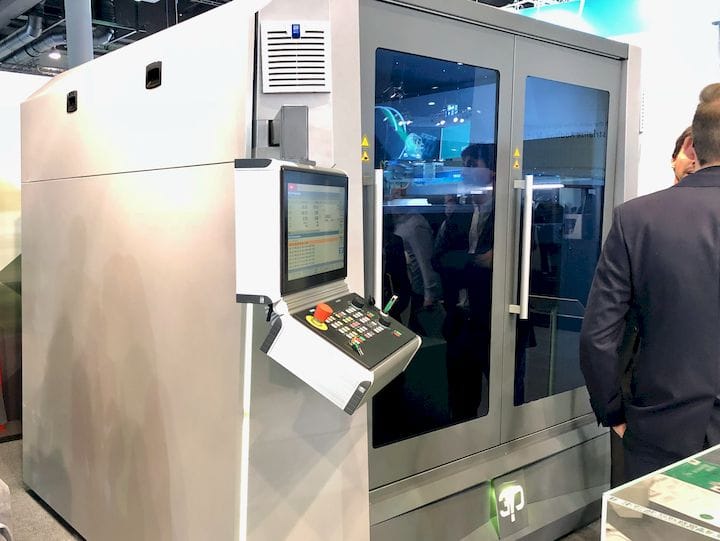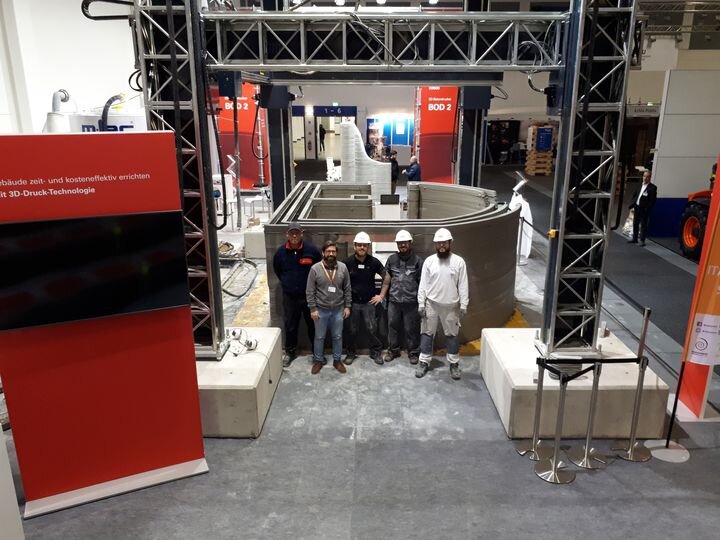![Hage’s massive 175X industrial 3D printer [Source: Fabbaloo]](https://fabbaloo.com/wp-content/uploads/2020/05/hage-5axis-1_result_img_5eb09d3580a4f.jpg)
You may have seen our story last year on Hage’s amazing 5-axis 3D printer, but did you know they offer several other powerful 3D printers?
They offer four different machines, with the smallest being the model 72L. This is a moderately-sized industrial 3D printer with a build volume of 600 x 400 x 280 mm. Its heated chamber can be raised to 50C, making it suitable for several materials, although not all.
The model 84L, shown here, has a slightly larger build volume than the 72L at 400 x 600 x 350 mm, but can produce an internal chamber temperature of up to 85C, making it much more suitable for 3D printing various engineering materials.
![The Hage model 84L industrial 3D printer [Source: Fabbaloo]](https://fabbaloo.com/wp-content/uploads/2020/05/hage-3axis-1_result_img_5eb09d35d6c31.jpg)
There is a model 140L, which also offers an 85C chamber, but with an added build volume to 700 x 500 x 400 mm. Hage says it can handle these materials: “ASA, ABS, PET-G, PLA, TPE, PA, PC-ABS, PP high performance plastics: PEEK, PSU, PPSU metal/ceramic filled materials.”
Their most interesting device, of course, is their 5-axis 3D printer, the model 175. Curiously, this large device is offered in two configurations, the version 175X and the 175C.
The model 175X is the now-familiar 5-axis device. This is an extremely powerful 3D printing motion system paradigm that overcomes the sometimes unrealized constraints of conventional cartesian systems that operate on flat layers in the XYZ axes.
Instead, the five axes of movement allow the print head to be positioned in unusual ways to virtually eliminate the need for support material. For example, if you happened to be printing an overhang that would normally require support structures, in the model 175X the motion system would simply tip prints over to “un-overhang” that particular section.
![A tube 3D printed with the Hage 5-axis 3D printer [Source: Fabbaloo]](https://fabbaloo.com/wp-content/uploads/2020/05/image-asset_img_5eb09d362911f.jpg)
The results are stunning, as you can see here in this tubular 3D print. If you look closely, you can see that the “layers” are not aligned as they follow the curve of the tube in an optimum manner. This print’s result is very much the same as if you had been 3D printing a straight tube in a vertical orientation, except that through the 5-axis motions, it can be twisted.
But what of the other model, the 175C?
Strangely, it turns out to NOT include a 5-axis motion system like its sibling, the 175X. The 175C includes a standard 3-axis motion system.
This seems very curious to me, and I asked their representative why this would be so. Why would someone not want the 5-axis features?
The answer was rather straightforward: it turns out that some businesses don’t require the 5-axis feature due to the nature of the prints they produce. Instead, they want the 175C for its gigantic heated build volume, which is quite a bit larger than the 175X due to the presence of the 5-axis motion system.
For comparison, the 175X’s 5-axis build volume is a healthy 500 x 500 x 450 mm, but that size seems a bit small considering the rather large cabinet for the 175X. This gives you an idea of how much space is eaten up by the 5-axis motion system.
Meanwhile, the 175C’s build volume — in the same cabinet as the 175X — is a truly massive 1200 x 1200 x 800 mm. So the answer to the question of why someone would want a 175C over a 175X is simply that the gigantic build volume is more desirable than the geometric capabilities.
This is the essence of customer-driven product design: Make what people want, and they will buy it.
Via Hage











FELIXprinters has released a new bioprinter, the FELIX BIOprinter, which is quite a change for the long-time 3D printer manufacturer.